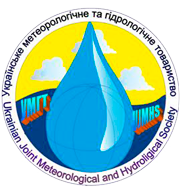Assessment of suitability of the Dniester River's water for drinking water supply
Abstract
The Dniester is a transboundary river between Ukraine and the Republic of Moldova. It is the second longest river in Ukraine and the ninth in Europe. From its source to a town of Staryi Sambir, the Dniester flows through the Carpathian Mountains, then across the flat territory of Ukraine and Moldova.
The Dniester Basin extends across seven regions in southwestern Ukraine (Lviv, Ivano-Frankivsk, Ternopil, Khmelnytskyi, Vinnytsia, Chernivtsi and Odesa Regions). A small area of the river in its upper reaches is located in Poland. The basin's shape is a very elongated oval that is curved in the middle, about 700 km long with an average width of 120 km.
As it flows into the Black Sea, the Dniester River forms the Dniester estuary in Odesa region (between Ovidiopol and Bilhorod-Dnistrovskyi districts). The estuary area of the Dniester River is a complex landscape system at the sea-river-land contact.
Drinking water is an important factor determining a person's health. Due to the intensive development of industry, agriculture and utility services, the number of pollutants that enter the environment and worsen the quality of drinking water in Ukraine keeps increasing. This increases the risk of toxic and infectious diseases spread among the population that consumes such low-quality water. That is why solving the problem of drinking water monitoring and assessment of its quality is a pressing task requiring urgent action.
The article examines the quality of water for drinking needs at the water intake site of the Dniester River, a town of Biliaivka, for 2018-2022. Water quality assessment was carried out according to DSTU 4808: 2007 based on average and worst values. The methodology covers 80 indicators and, in accordance with sanitary legislation, is divided into seven separate groups (blocks). According to hygienic standards, the quality of river water is considered suitable for use if it belongs to quality classes 1-3. In this research, the analysis was carried out according to 23 indicators included in three groups, so the assessment is considered as tentative: Group I - organoleptic indicators (chromaticity, turbidity); Group II - general sanitary indicators (dry residue (mineralization), sulfates, chlorides, magnesium, alkalinity, hydrogen index, ammonium nitrogen, nitrite nitrogen, nitrate nitrogen, phosphate phosphorus, dissolved oxygen, bichromate oxidation (COD), BSK5); Group VII – toxicological parameters (total iron, manganese, chromium (VI), zinc, petroleum products, synthetic surface active agents (surfactants), volatile phenols).
It was determined that, according to the average values, the water quality of the Dniester at the water intake site is characterized as "good", which means it has clean water of acceptable quality. As for the worst indicators, the water was assessed as transitional in quality from "good" (clean) to "satisfactory" (slightly polluted).
References
Derzhavne Ahentstvo Vodnykh Resursiv Ukrainy. (2021). Mizhnarodnyi den Dnistra. [International Dniester Day]. Available at: https://rovrkhm.gov.ua/%D0%BC%D1%96%D0%B6%D0%BD%D0%B0%D1%80%D0%BE%D0%B4%D0%BD%D0%B8%D0%B9-%D0%B4%D0%B5%D0%BD%D1%8C-%D0%B4%D0%BD%D1%96%D1%81%D1%82%D1%80%D0%B0/ (Accessed 10 April 2024) (in Ukr.)
Pro pytnu vodu ta pytne vodopostachannia: Zakon Ukrainy vid 10.01.2002 № 2918-III (Chynnyi). [On drinking water and drinking water supply: Law of Ukraine dated January 10, 2002 No. 2918-III]. Available at: https://ips.ligazakon.net/document/T022918?an=418 (Accessed 15 Мау 2024) (in Ukr.)
DSTU 4808: 2007 - Dzherela tsentralizovanoho pytnoho vodopostachannia. Hihiienichni ta ekolohichni vymohy shchodo yakosti vody i pravyla vybyrannia (2007). [DSTU 4808: 2007 - Sources of centralized drinking water supply. Hygienic and ecological requirements for water quality and selection rules] Available at: https://online.budstandart.com/ua/catalog/doc-page?id_doc=53159 (Accessed 15 Мау 2024) (in Ukr).
Mahas, N. I.(2023). Otsinka rivnia ekolohichnoi bezpeky poverkhnevykh vod richky Pivdennyi Buh yak dzherela pytnoho vodopostachannia u Mykolaivskii oblasti. [Assessment of the level of ecological safety of the surface waters of the Southern Bug River as a source of drinking water supply in the Mykolaiv region]. Ecological sciences: a scientific and practical journal, 2023, 1(46), рр. 37–42. (in Ukr.)
Romanenko, V.D., Zhukynskyi, V.M., Oksiiuk, O.P. et al. (1998). Metodyka ekolohichnoi otsinky yakosti poverkhnevykh vod za vidpovidnymy katehoriiamy. [Methodology of environmental assessment of surface water quality by relevant categories]. Kyiv: SYMVOL-T, 1998. (in Ukr.)
Pro zatverdzhennia Derzhavnykh sanitarnykh norm ta pravyl "Hihiienichni vymohy do vody pytnoi, pryznachenoi dlia spozhyvannia liudynoiu" (DSanPiN 2.2.4-171- 10)»: Zakon Ukrainy № 452/17747.01.07.2010. Avalaible at:https://zakon.rada.gov.ua/laws/show/z0452-10 (Accessed 15 Мау 2024) (in Ukr.)
Romanchuk, M.Ye., Tkach, K.S. & Polishchuk, A.A. (2015). Otsinka yakosti vody r.Dnister-vodozabir za hidrokhimichnymy pokaznykamy na protiazi 1998-2012 rr. ta osoblyvosti zmin biohennykh rechovyn za kharakterni po vodnosti roky. [Assessment of the water quality of the Dniester river intake by hydrochemical indicators during 1998-2012 and the peculiarities of changes in biogenic substances during the years characterized by water content]. Vìsnik Odesʹkogo deržavnogo ekologìčnogo unìversitetu [Bulletin of Odessa state environmental university], 19, рр. 114-119 (in Ukr.)
Matsenko, O.M., Chyhryn, O.Yu., Taranovskyi, V.I. & Dolhodush, A.I. (2011). Sotsio-ekoloho-ekonomichni problemy vodopostachannia v Ukraini. [Socio-ecological and economic problems of water supply in Ukraine]. Mekhanizm rehuliuvannia ekonomiky [Economy regulation mechanism], 4, рр. 264-271.





